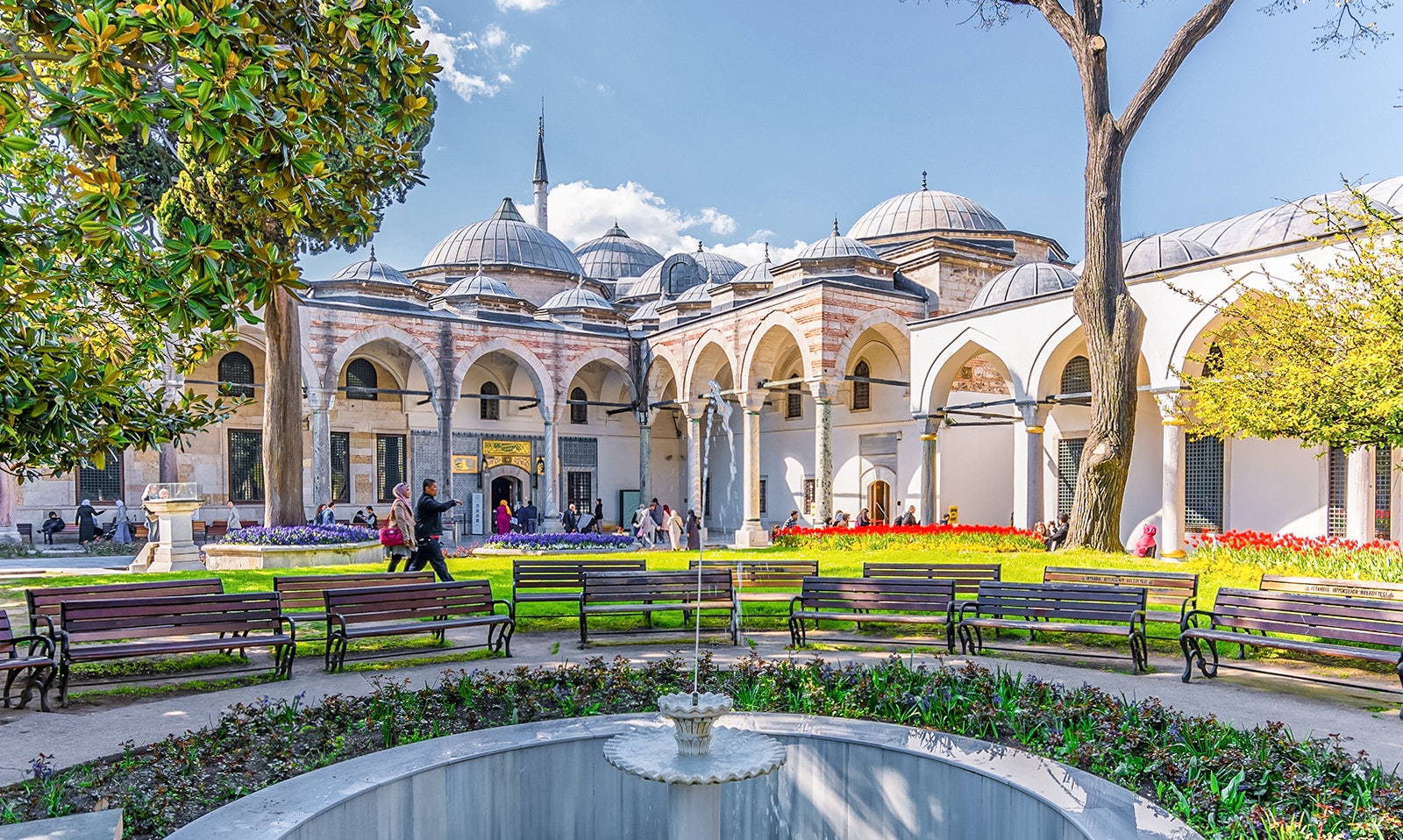Hagia Sophia, constructed between 532 and 537 CE by Emperor Justinian I, is an extraordinary landmark that was a church, a mosque, a museum, and is now a mosque again—all in the span of 1,500 years. Its iconic dome and stunning Byzantine design made it revolutionary at the time and continues to awe visitors today. Over centuries, numerous cultures have left their mark, creating a unique blend of Christian mosaics and Islamic calligraphy.
Now, navigating its entrances can be a bit confusing, but read on to identify the perfect Hagia Sophia entrance for your visit.

Recommended tickets to Hagia Sophia
Hagia Sophia entrances
1. Sultanahmet Square entrance
Primarily dedicated to Turkish citizens and residents visiting for worship, this western entrance offers direct access to Hagia Sophia's main prayer hall. It's typically busier during prayer times and religious events.
How to reach:
- By tram: Take the T1 line to Sultanahmet Station; it’s only a short 5-minute walk from there.
- By taxi or car: You can conveniently arrive right near Sultanahmet Square, just a few steps from this entrance.
2. Topkapi side entrance
If you're visiting as a tourist or are a non-Turkish national, this eastern entrance is the one you’ll be using. Located near Topkapi Palace's Imperial Gate, it's your ticket to exploring the incredible upper galleries and museum areas of Hagia Sophia. Remember, you won't exit from the same place—after touring the gallery, you'll descend stairs to the southwest vestibule and then exit via a ramp in the northeast.
How to reach:
- On foot: From Sultanahmet Square, follow the path toward the Topkapi Palace gardens; the quieter, less crowded Topkapi entrance is right beside the gardens.
- By bus: Disembark directly at the Sultanahmet bus stop, located conveniently near the mosque area.
Other entrances to Hagia Sophia
Southern entrance (Emperor’s Gate)
Back in its Byzantine heyday, this gate was exclusive—reserved strictly for the emperor and the highest-ranking dignitaries. Known for the stunning 10th-century mosaic above it, this richly decorated entrance captures Hagia Sophia's blend of art, religion, and imperial authority.
Access: Not open to tourists
Northern entrance
The northern entrance leads directly into the narthex and offers passage to the upper galleries and main area. Although it doesn't boast the grandeur of Emperor’s Gate, its beautiful North Gallery, once lined with golden mosaics, offers a fascinating glimpse into Hagia Sophia's artistic history.
Access: Open to tourists (temporarily)
Side entrances
These smaller portals mostly serve operational purposes, used by staff for maintenance and occasionally opened during religious services.
Access: Used during religious services or staff maintenance
The Imperial Balcony entrance
Situated on the west side facing the main apse, this was the entrance and viewing spot for the Byzantine imperial family. Decked out with extraordinary marble carvings and vibrant mosaics, it's where the imperial figures witnessed events from above.
Access: Not open to tourists
FAQs
Yes, tourists and non-Turkish nationals should use the Topkapi side entrance, located near the Imperial Gate of Topkapi Palace, to access the upper galleries and museum areas.
No, the Sultanahmet Square entrance is primarily reserved for Turkish citizens and residents visiting for prayer. Tourists should use the dedicated Topkapi side entrance.
No, only two entrances (Sultanahmet Square and Topkapi side) are currently functional for visitors. Other historical entrances like the Emperor’s Gate and Imperial Balcony Entrance are not open to the public.
If you’re already near Sultanahmet Square, it’s easiest to walk towards Topkapi Palace gardens—the tourist entrance is right next to it. Alternatively, you can take a bus to the Sultanahmet stop close by.


